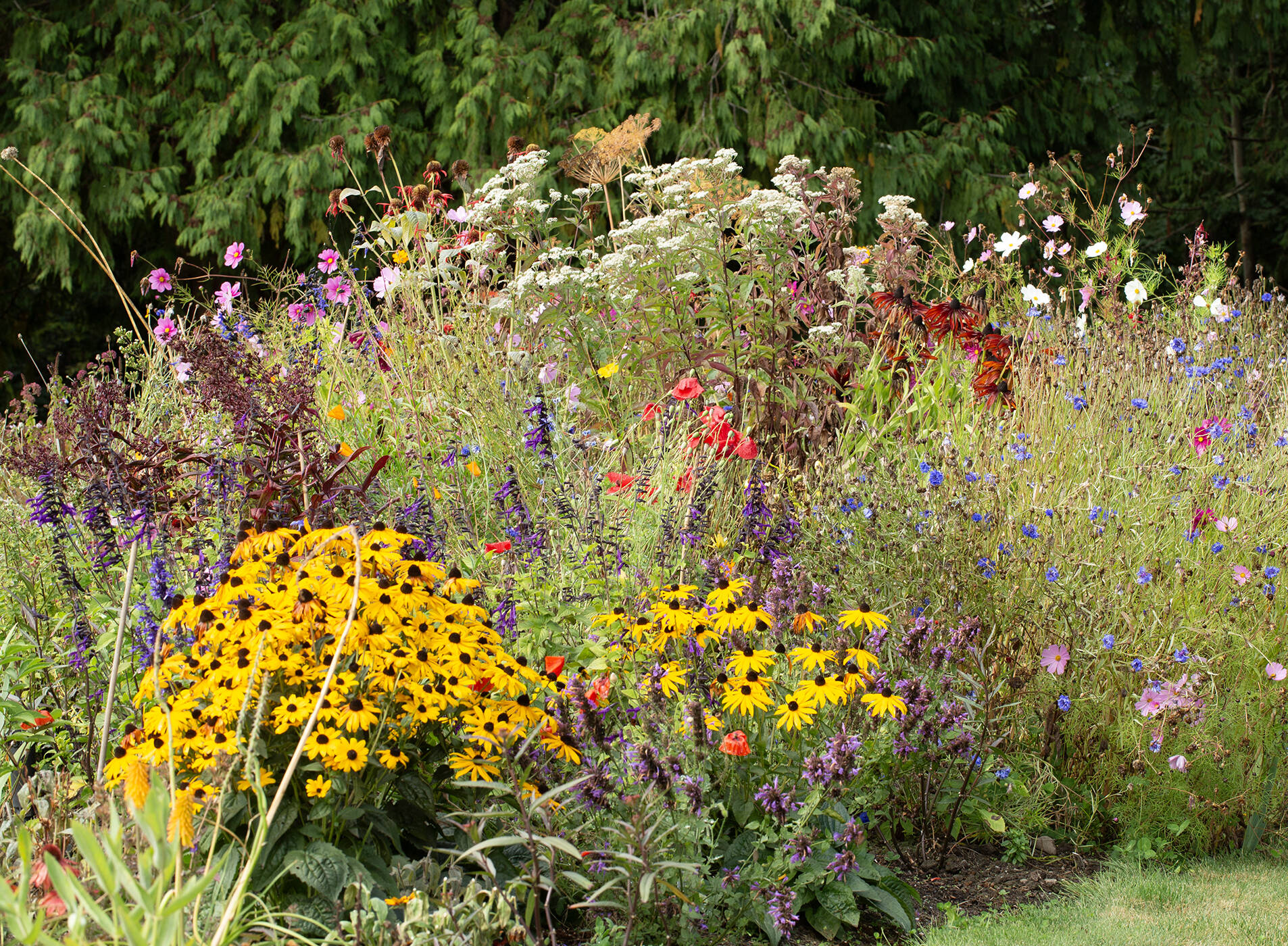Misunderstanding what is meant by proper watering is one of the most common causes of plant death or poor plant performance. This becomes a more significant issue during dry times when rainfall must be replaced with irrigation water.
As the fall rainy season approaches, continue irrigating until regular rainfall ensures the plants receive enough water to sustain them.
For a plant to thrive, it must develop a healthy root system. A plant’s root system needs both air and water for survival and healthy plant growth. Soil conditions that are too wet exclude available air, and roots may drown or be killed by fungus diseases. Soil conditions that are too dry may lead to plant wilt, desiccation, and death.
The root systems on plants have three main functions. One function is to anchor the plant so that it stays upright. A second function is to store food and carbohydrates to sustain the plant during the dormant season or when the leaves are removed or are lost from the plant’s canopy.
The third function is to absorb water and nutrients.
The part of the roots that absorb water and nutrients are called feeder roots or hair roots. These very fine, delicate roots are constantly being generated and are constantly dying off due to soil conditions and other factors.
The feeder roots on a plant that is established in the ground occur primarily within an area called the feeder root zone. This zone comprises the area slightly under the plant canopy and extends well outside of the drip line of a plant.
There is no one way to correctly water plants. Any method used to water plants, such as a bucket, a hose, flood irrigation, sprinklers, bubblers, a drip system, micro-spray or any other watering method can be used to properly water as long as four principles are followed.
Water the feeder root zone
Water near the trunk or stem on newly planted plants so that you thoroughly wet the original root ball.
Water the feeder root zone, including the area outside of the drip line, on plants that are well established.
Water farther away from the trunk or stem as time progresses, as the plant grows larger, and/or the plant’s canopy expands in diameter. (Roots near the trunk function primarily to anchor the plant and to store food.)
Apply water to a sufficient area
Irrigate as much of the area around all sides of the plant as possible, not just one side or in one area. Water will spread out depending on soil type.
If irrigating with a drip system or with soaker hoses, provide enough drip emitters or concentric rings of soaker hose to wet a significant area of the feeder root zone — not just a few spots or a single line.
To promote the expansion of the root system into the surrounding soil, adjust and expand the region irrigated as the plant grows.
Apply a sufficient amount of water
Water enough to thoroughly wet the soil to an adequate depth of the feeder root zone. The top three feet of soil contain 90% of feeder roots; of that 90%, 70% are in the first foot of soil.
Water to an average depth of 1-3 feet at each watering for plants that have been established.
Smaller plants generally have shallower root systems. As a general rule, water to a minimum depth of 6-12 inches for plants 1 foot or less in height, to a depth of 1-2 feet for plants 1-5 feet tall, and to a depth of 2-3 feet for plants taller than 5 feet.
For plants in containers, thoroughly wet the entire root ball and the surrounding soil in the container. At each watering, use enough water to leach excess salts out of the bottom of the container.
Water at correct intervals
Watering frequency will vary with the type of plant, time of year, location, size, soil, weather conditions and many other variables.
On average, water new plants in the ground up to three times per week. Water older established plants in the ground once a week to once a month, depending on the above stated variables.
Water plants in containers up to three times per week.
Frequent shallow watering will promote a very shallow root system because sufficient water may not reach deep enough into the soil.
Also, if the surface soil is kept constantly wet, sufficient air may not be able to penetrate into the soil. A balance of both water and air in the soil root zone is necessary to promote deeper root growth.
There are very few situations in which plants should be watered every day.
Remember that watering too frequently will exclude oxygen from the soil and cause roots to drown as well as promote diseases.
Tom Del Hotal has been a nurseryman and horticulturist since 1977. He is an ISA-certified arborist and a Clallam County Master Gardener.


